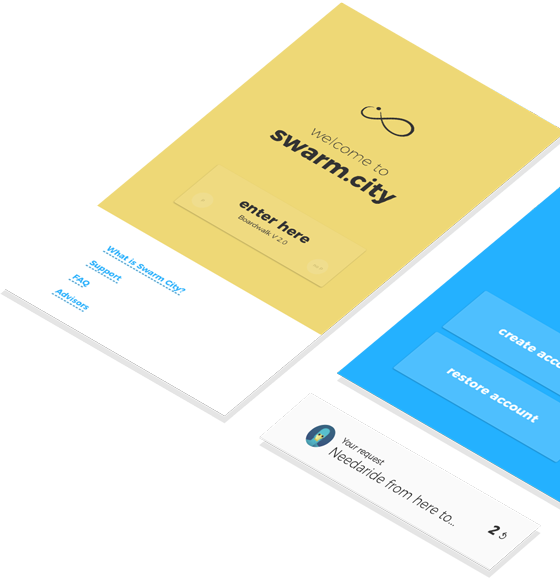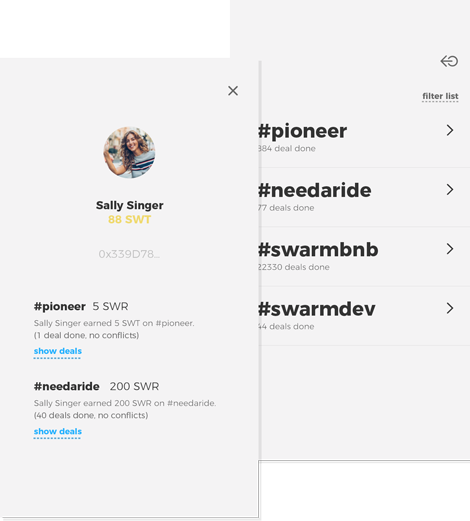Hashtags are marketplaces.
In the physical world people find goods and services in physical marketplaces, like stores and shops. In Swarm City people find goods and services in hashtags. Hashtags are context specific marketplaces, for instance #needaride is a rideshare context where riders can find drivers willing to get them from one location to another. Or #contractor is where homeowners can find plumbers and electricians to fix their house. Users earn reputation by transacting in a hashtag.
Not only that, Swarm City users are free to open and run their own marketplace by creating a hashtag. Just like a shop proprietor, the hashtag creator is responsible for making their marketplace an excellent place for business. They ensure that buyers and sellers, and service seekers and providers using their hashtag will have a great experience. They also handle any dispute that may arise in their hashtag.
Go here to learn more about hashtags.
Hives are communities.
Hives are people who share values and resources Each person has a unique combination of genetics and experience, and because of this their skillsets vary. For this reason it benefits humans to band together and form communities, to leverage the combined abilities and resources of all members. In Swarm City, these groups are called “hives”.
Hives are people who share values and resources, and work together to provide services. For example, a group of aligned rideshare drivers may form a hive, and that hive would provide rides in a hashtag. Each driver would earn hive reputation for every ride they provide as a hive member, and would give a small percentage of their earnings to the hive’s shared resource pool. Drivers benefit from organizing this way because their hive reputation will give them influence on how the resource pool will be spent; for example, pooled insurance and marketing.
Go here to learn more about hives.
Reputation shows what a user values.
Often in-person commerce is transparent because both parties can see the goods and payment method that make up the deal. But sometimes people transact without knowing each other, either in person or online. In those situations people need some way to establish trust, so they may have confidence that the person they’re dealing with and the transaction itself is above board.
In Swarm City users create contextual reputation by completing transactions in a marketplace (hashtag). As an example, riders and drivers who successfully complete a #needaride transaction both get #needaride reputation. Users gain reputation in each marketplace they transact, and that reputation is forever associated with their profile. Their reputation gets affixed to the blockchain, which means it’s permanent and absolute.
A user’s profile will show all the reputation they have acquired in hashtags and hives, and because of this, gives their transaction partners a general understanding of what types of things they value, and what types of things they’ve achieved competency in.
Go here to learn more about reputation.













